Summary
- Mandatory task: yes
- Word count: around 100 words
- Main characteristics: Typical layout, functional language (agreeing/disagreeing, giving your opinion, offering to do something, explaining something)
- Structure: opening formula & paragraph, topic paragraphs, closing paragraph & formula
- Language: specific phrases to start/end an email, agreeing/disagreeing, giving your opinion, offering to do something, explaining something
- Example
Dear Mrs Lake,
Thank you for your email. I think it’d be a great idea to have a party with the whole class.
I think we should have our party at the park because we’re in the classroom all the time so this would be a nice change.
At the park there are some ping pong tables and I can bring my football so why don’t we make teams and have a tournament of different sports?
In my opinion, we should have a barbecue. We can bring what we like, for example, meat and some drinks like Coca Cola and everyone will be happy.
Thanks again and see you in class.
Phill
Introduction
You always write an email in PET in response to an email or notice (ca. 100 words) you have received from someone else. Every situation is different and you have adapt your email to this. You also need to choose the correct language and tone (informal/neutral) for your text. You normally write to a friend, teacher or someone else you know.
The email task is the one text that you have to do in the PET exam. You can’t choose to do it or not so it is very important to know exactly what the requirements are.
>>> Find out how to write an amazing story for PET here. <<<
>>> For great information on PET article writing click here. <<<
What does a typical email task look like?
When you look at a writing task in the PET exam, there are always some questions that you have to ask yourself.
- What is the situation?
- What do I have to include in my email?
- Who is going to read my email?
It is essential for you to think about these questions before you start to write your email because they give you a lot of useful information and make the task much easier. So, let’s look at a typical email writing task:
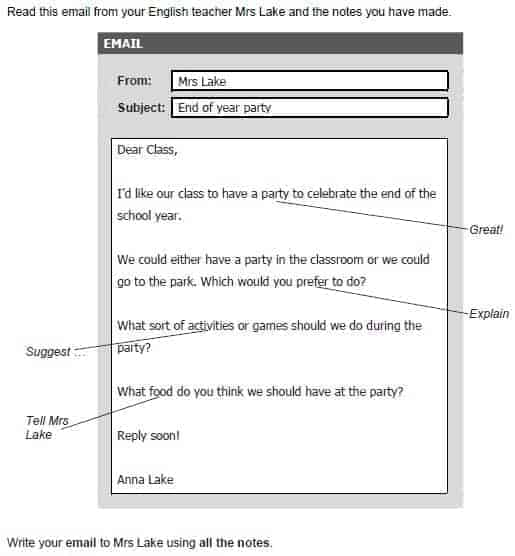
A typical email task looks like the one above. You read a short email (100-120 words) with four prompts which are connected to the text with lines. So, let’s have a look at our questions from earlier.
First of all, the situation is about organising an end-of-year party with your class and your teacher, Mrs Lake, is asking you for a few ideas.
You always have to include four main things in your emails. In this case, you (1) have to react to the news that there is a party, (2) explain if the party should be in the classroom or the park, (3) make a suggestion about possible games and activities and (4) tell Mrs Lake what kind of food you would like to eat at the party.
It is very important for you to know exactly what you have to include because you have to use specific language for each of the four points.
Last but not least, your teacher is going to read your email so you can’t use the same informal language you would use with a friend, but it also doesn’t have to be super formal. Somewhere in between the two (neutral) is probably the best option.
In neutral English you can use contractions like ‘I’m’ or ‘she’s’ or phrasal verbs, but no slang words or anything that is not in the dictionary.
How to organise you email
Emails can always be organised in the same way. If you follow my recommendations in this article, you will get good results every time you sit down to write an email.
In the last section you learned that in every task there are four main things that you have to include in your text.
- React to the news that there is a party.
- Explain if the party should be in the classroom or the park and why.
- Make a suggestion about possible games and activities.
- Tell your teacher what kind of food you would like to eat.
Because there are four main points it is a good idea to make four paragraphs in your email, one for each main point. In addition to that, we always have to include an opening and closing formula to start and finish our email the right way.
So, a typical PET email looks like this:
- opening formula
- four main topic paragraphs
- closing formula
This works just fine so you don’t have to worry too much about the organisation of your emails any more.
Don’t forget to make a plan
Unfortunately, many students forget to plan their email before they start to write. As a result, they make mistakes with the organisation of their text and they often forget important details.
So, take 3-4 minutes at the beginning and think about what you want to put in which part of your writing task. I have already given you an idea how to organise your email so you just have to add some ideas and then you’re ready to go.
You will see that writing becomes a lot easier and you will feel calmer and more relaxed when you are in the exam.
[elementor-template id=”1954″]
The different parts of an email
In this part we are going to find out what the different `parts of an email look like. Remember, in an email for B1 Preliminary you can always follow the same structure so there are some things that you can do in every single email task.
Opening formula
In an email we always start by saying hello to the person we are writing to. There are different ways to do this, but generally, there are two main options.
- Hi Phill,
- Dear Mr Smith,
The first option is better for informal emails, for example to a friend or classmate. We use ‘hi’ as informal way to say hello and the first name of the person.
We use the second salutation in formal writing to a teacher, manager or someone similar to that. ‘Dear’ is a polite option to say hello and we use ‘Mr’ or ‘Ms’ plus the family name to be extra polite.
Always check in the task who is going to read your email because your salutation depends on formal or informal English.
Main paragraphs
In your main paragraphs there are two things you need to focus on. You want to talk about all the main topic points and use good language.
Remember what the four topic points are:
- React to the news that there is a party.
- Explain if the party should be in the classroom or the park and why.
- Make a suggestion about possible games and activities.
- Tell your teacher what kind of food you would like to eat.
You can make one short paragraph for each idea because that’s what Mrs Lake did in her email to you.

Now, you only have to think about what good language you can use to say what you should say in each of these paragraphs. In this part I will only give you an example of a paragraph, but if you keep reading, you will find useful examples for all the different types of language you might have to use in email writing task.
An example paragraph could look like this:
Dear Mrs Lake,
Thank you for your email. I think it’d be a great idea to have a party with the whole class.
You can see that you don’t have to write a lot to react to good news. First of all, I thanked Mrs Lake for writing and then reacted to the good news. If you do something similar with the other main topic points, you will pass the email task easily.
Closing formula
Finishing an email is just as easy as starting it. There are some expressions that we can always use. Just be careful because you need to check who you are writing to so your closing formula is not too personal or informal. Here, is a possible closing formula for our example task:
Thanks again and see you in class.
Phill
Again, you don’t have to write a lot in your closing formula. Keep it simple and you’ll be fine.
Useful language for emails
In a PET email writing task you can use a lot of good language to get high marks. You have to think about an opening and closing formula as well as expressions to talk about the main topic points.
Most of the time you have to do some of these things:
- React to a piece of news
- Agree / Disagree
- Explain something
- Offer to do something
- Give your opinion
- Apologise for something
- Make a suggestion
- Make a recommendation
This seems to be a lot, but with a little bit of practice it will become much easier. So, let’s have a look at some useful expressions.
| Opening formula | Hi [name], Hello [name], Dear [name], |
| Closing formula | Talk to you soon. All the best, Take care, Best regards, Warm regards, Love, Lots of love, |
| Reacting to a piece of news | It’s good/great/sad to hear that … I’m glad/happy/sorry to hear that … Thanks (a lot) for letting me know that … What great/fantastic/brilliant/wonderful news! That’s awful / a pity / unfortunate! |
| Agreeing / Disagreeing | I agree / disagree (with you). I couldn’t agree more. I (don’t) think so. I think you’re right. That’s so true! Yes, but … I’m not sure about that. |
| Explaining something | because (of) That’s why … This means … for example / such as / like |
| Offering to do something | I/We could … If you want, I/we could … Shall I/we … Do you want me/us to …? |
| Giving your opinion | In my opinion, … I think … For me, … |
| Apologising for something | I’m sorry for (+-ing) I apologise for (+-ing) I (really) didn’t mean to … |
| Making a suggestion | Let’s … I suggest (+-ing) How about (+-ing) Why don’t you/we …? Don’t you think …? |
| Making a recommendation | (I think) you/we should … Don’t miss … I (highly) recommend (+-ing) |
Time to practise
The best way to get better at writing is to practise. Don’t be afraid. If you work hard, you can become very good quickly. I hope my article will help you and if you like it or have some ideas for me, please leave a comment.
Lots of love,
Teacher Phill

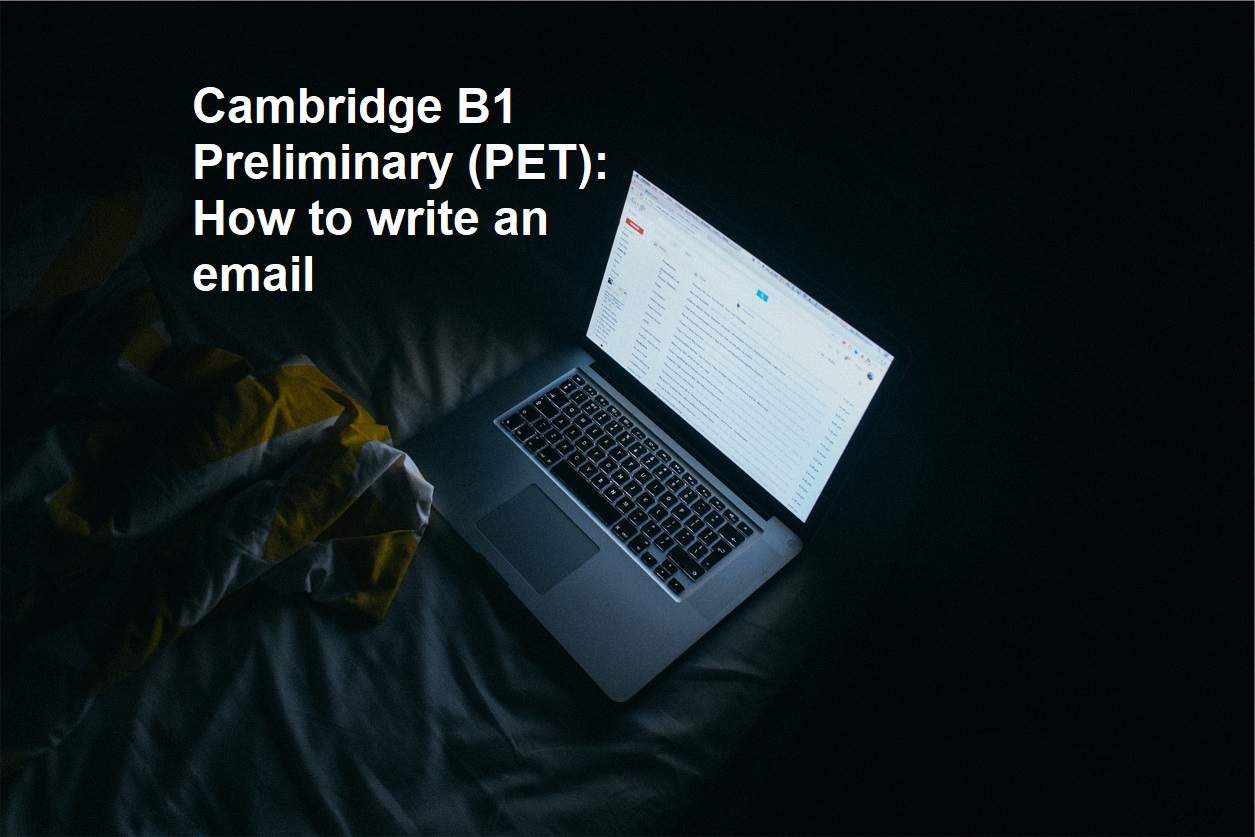

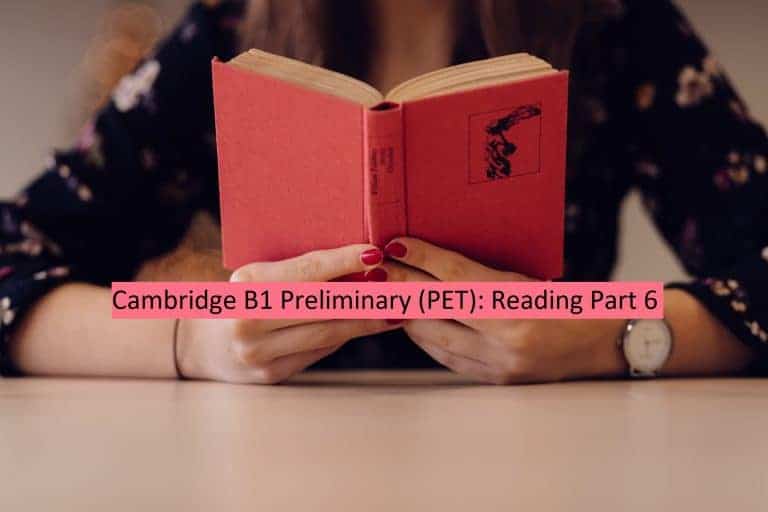
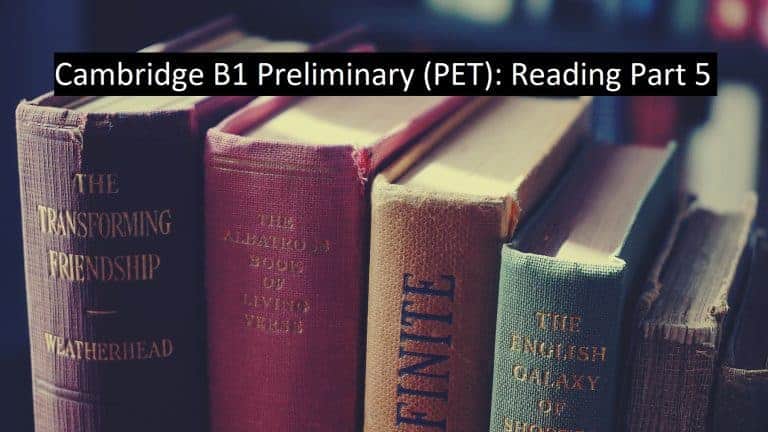


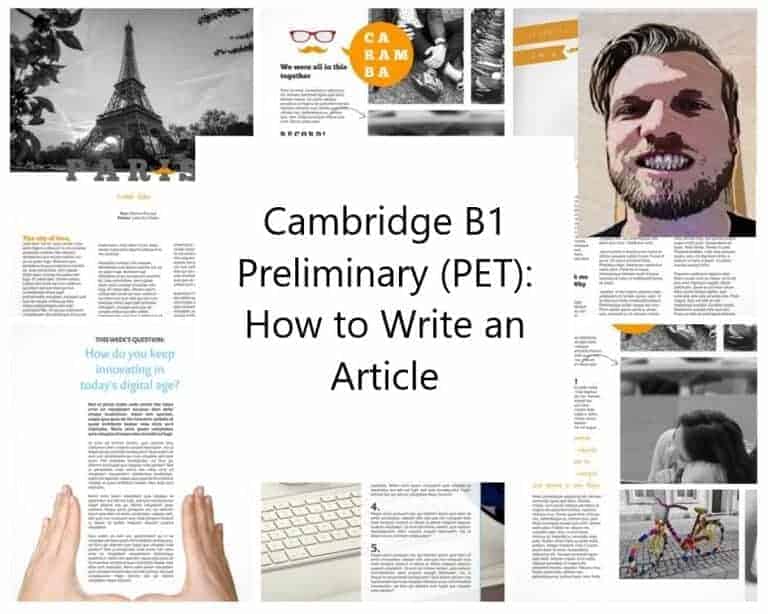
Hi Phill.
Thanks for your recommendations and suggestions, I will put them in practice in my engilsh.
Regards from Colombia 🙂
Dear Phill,
Thank you, this is very useful. I used your videos in class last year and I will again this year.
However, it would be great to have a downloadable PDF file of this to share with my students.
Thanks again,
Emer